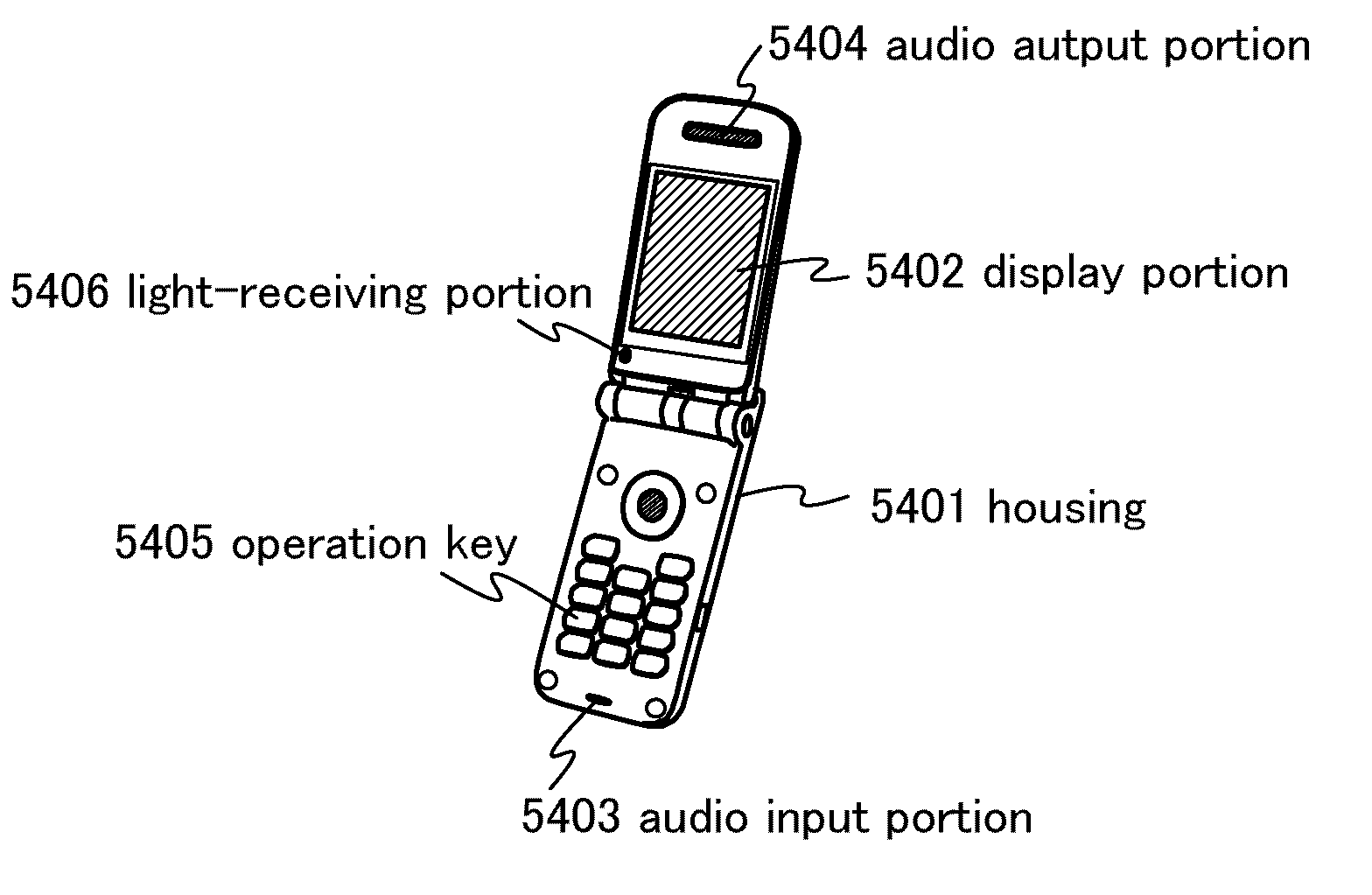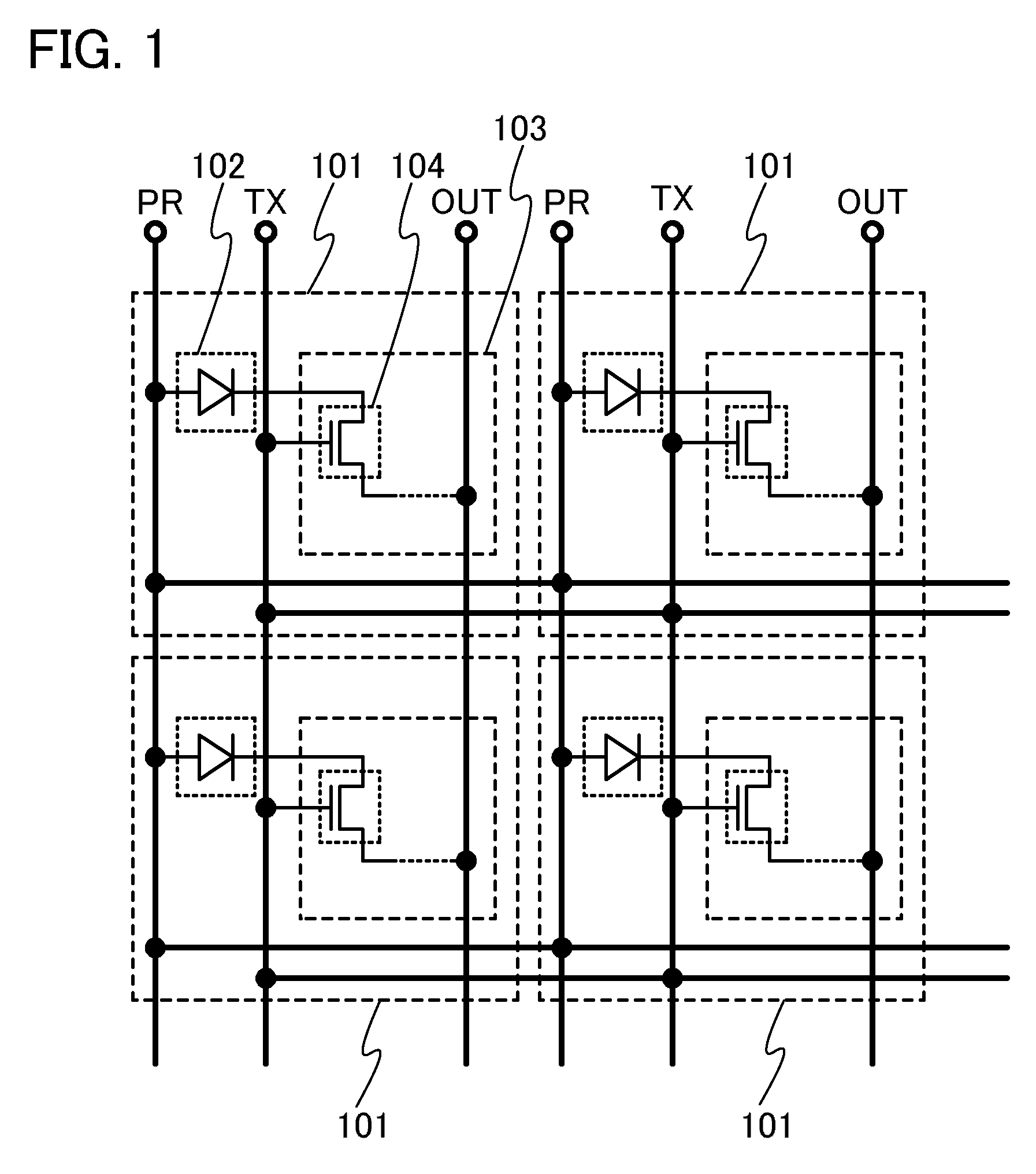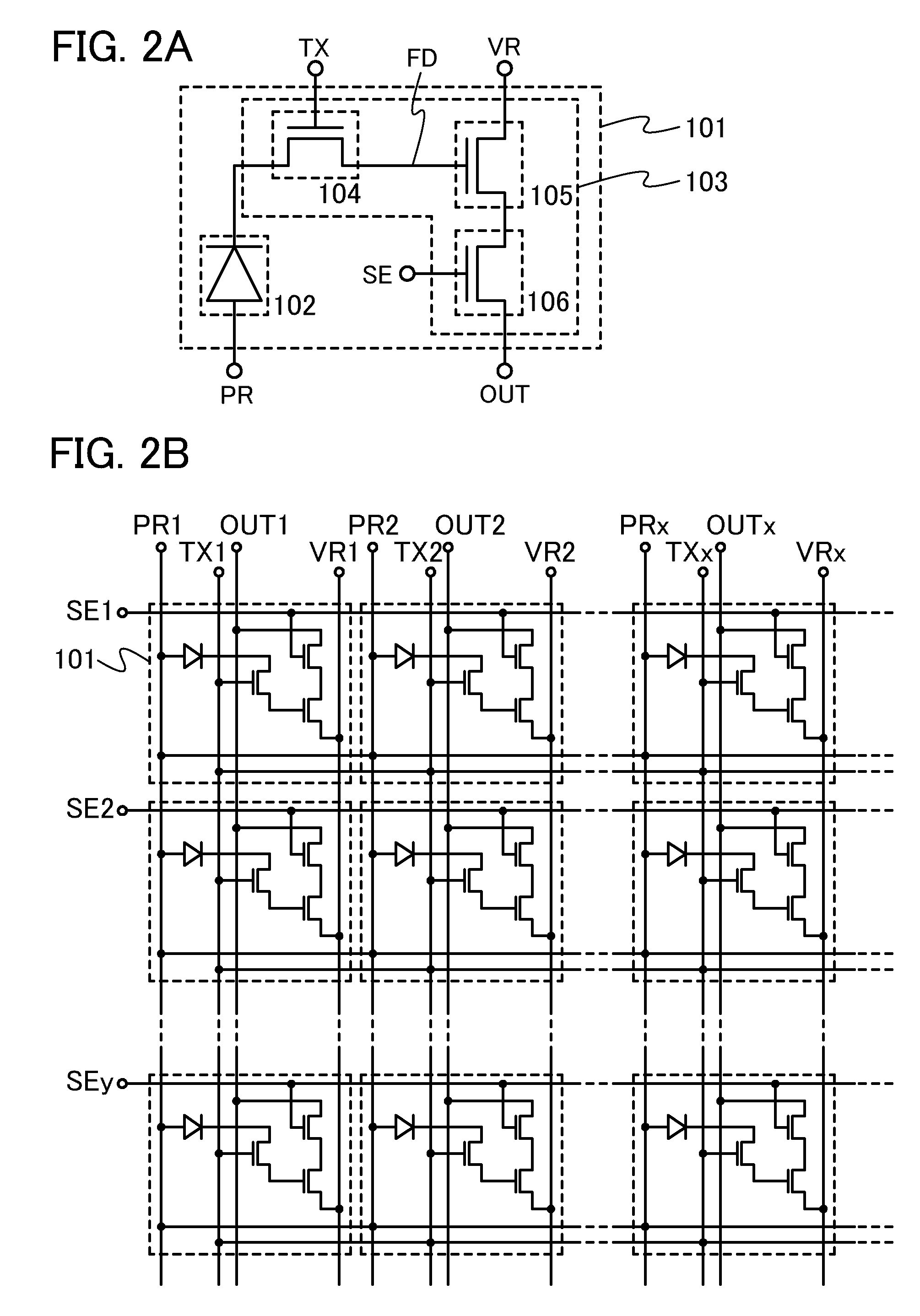Solid-state imaging device and semiconductor display device
a technology of solid-state imaging and semiconductors, which is applied in the direction of radio frequency controlled devices, instruments, television systems, etc., can solve the problems of signal delay, reduced image quality, and high probability of potential decrease or signal delay along the wiring as stated above, so as to reduce the power consumption of a solid-state imaging device, prevent the variation of the potential of signals, and suppress the potential of decrease or signal delay
- Summary
- Abstract
- Description
- Claims
- Application Information
AI Technical Summary
Benefits of technology
Problems solved by technology
Method used
Image
Examples
embodiment 1
[0047]A configuration of connections among photosensors included in a solid-state imaging device or a semiconductor display device of one embodiment of the present invention will be described with reference to FIG. 1.
[0048]FIG. 1 is an example of a circuit diagram illustrating a configuration of connections among a plurality of photosensors 101 in a pixel portion. In FIG. 1, the photosensors 101 included in pixels are arranged in matrix. Each of the photosensors 101 includes a photodiode 102 and an amplifier circuit 103. The photodiode 102 is a photoelectric conversion element which generates current when a junction of semiconductors is irradiated with light. The amplifier circuit 103 is a circuit which amplifies current obtained through light reception by the photodiode 102 or which holds charge accumulated due to the current.
[0049]The amplifier circuit 103 may have any configuration as long as it can amplify current generated in the photodiode 102; the amplifier circuit 103 includ...
embodiment 2
[0155]In this embodiment, a configuration of the photosensor 101 which is different from that in FIG. 2A will be described.
[0156]FIG. 11 is a circuit diagram of an example of the photosensor 101. In the photosensor 101 illustrated in FIG. 11, the amplifier circuit 103 includes a transistor 104, a transistor 105, a transistor 106, and a transistor 107. The transistor 104 controls the supply of current generated in the photodiode 102 to the amplifier circuit 103. In the transistor 105, the current value or resistance value between a first terminal and a second terminal thereof is determined by a potential supplied to the second terminal of the transistor 104. The transistor 106 functions as a switching element for supplying a potential of an output signal determined by the current value or resistance value, to the wiring OUT. The transistor 107 functions to reset the amount of charge accumulated in the amplifier circuit 103.
[0157]Specifically, in FIG. 11, a first terminal of the trans...
embodiment 3
[0176]In this embodiment, a method for manufacturing a solid-state imaging device or a semiconductor display device according to one embodiment of the present invention, which has a transistor including silicon and a transistor including an oxide semiconductor, will be described.
[0177]Note that in one embodiment of the present invention, an oxide semiconductor may be used for a transistor included in an amplifier circuit, or a general semiconductor such as germanium, silicon, silicon germanium, or single crystal silicon carbide may be used. For example, the transistor including silicon can be formed using a single crystal semiconductor substrate such as a silicon wafer or the like, a silicon thin film which is formed by an SOI method, a silicon thin film which is formed by a vapor deposition method, or the like.
[0178]First, as illustrated in FIG. 14A, a photodiode 704 and an n-channel transistor 705 are formed over an insulating surface of a substrate 700 by a known CMOS fabricating...
PUM
 Login to View More
Login to View More Abstract
Description
Claims
Application Information
 Login to View More
Login to View More - R&D
- Intellectual Property
- Life Sciences
- Materials
- Tech Scout
- Unparalleled Data Quality
- Higher Quality Content
- 60% Fewer Hallucinations
Browse by: Latest US Patents, China's latest patents, Technical Efficacy Thesaurus, Application Domain, Technology Topic, Popular Technical Reports.
© 2025 PatSnap. All rights reserved.Legal|Privacy policy|Modern Slavery Act Transparency Statement|Sitemap|About US| Contact US: help@patsnap.com



